Introduction 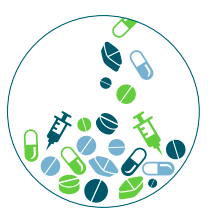
What if the medication that could improve or possibly save your life was just out of reach— available to others—but not to you. It’s a reality for many patients with rare and difficult to diagnose conditions who are unable to access the medicines they need. They may have exhausted all available commercial therapies for their disease, they may not have access to a clinical trial, or there may not be any efforts to bring the needed drug to market in the United States. In other cases, a needed medicine may be experiencing a temporary supply shortage or may have been discontinued.
For these patients, access to a medicine outside the clinical trial or commercial setting can represent a new and, in many cases, lifesaving treatment option.
The process of obtaining treatments that are not currently available can be confusing for many patients and their families. In this toolkit, we will introduce what access programs are, how they work, and what patients and their families can do to further explore.
What is “Expanded Access” or “Compassionate Use?”
In the United States, expanded access is the Food and Drug Administration (FDA) term used to describe the legal pathways for obtaining access to medicines outside the clinical trial or commercial setting. Also known as compassionate use, expanded access programs allow patients to access medicines that:
• Are still in clinical development
• Are not currently FDA approved or commercially available
• May never be commercially available, but may still offer benefit for a very small population
• Are approved in countries outside the U.S.
“The term compassionate use is often used in place of expanded access,” says Shannon Reedy, director of Chase the Cure. “It is appropriate because patients are seeking drugs outside of formal trials and relying on the compassion of physicians, the FDA, and drug makers to grant them access to a potentially life-saving option.”
SECTION 1: FOR PATIENTS IN THE UNITED STATES 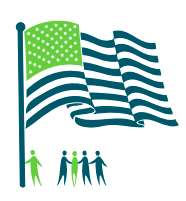
Since 1987, the FDA has had regulations in place that have enabled patients to access medicines that are still in development. Granting access would typically be considered once a medicine has shown positive results in clinical trials and has also been shown to be safe.
However, it cannot be stressed enough that it is the drug manufacturer who decides to make unapproved drugs available, and they are not under any obligation to comply with a request from a patient or healthcare provider.
Current FDA Regulations
The FDA regulations for Expanded Access Programs were amended in 2009 to ensure “broad and equitable access to investigational drugs for treatment.”
The regulations include:
• Requirements for the drug company that manufactures the medicine
• Specific patient criteria to identify exactly which patients are eligible for the medicine
• Safeguards to protect patients because these medicines have not been approved for commercial use in the United States
• A clear statement that the access program cannot interfere with an ongoing clinical trial. Therefore, if a patient can enter a clinical trial, then that is the route he/she must take as a clinical trial takes precedence over an access program.
The regulations also define the different pathways that are available, including:
• Single Patients: A single-patient pathway is the process whereby a doctor can ask a drug manufacturer if they would be willing to supply their drug for a patient in need even if it is not available in the United States or is still being studied in clinical trials. If the drug company agrees, they will provide the doctor with any needed information required by the FDA. The doctor must request approval from the FDA to treat the patient and FDA has 30 days to respond to this request. If FDA approves, the doctor still must periodically request approval from FDA for re-supply of the drug. There are also provisions for urgent requests that are made over the telephone with the FDA, and approval can be granted same day or within 24 hours. The drug manufacturer’s approval is required prior to submitting all requests to the FDA, even emergency requests.
• Groups of Patients: The FDA established specific criteria in which a drug company can identify a group of patients that it wishes to allow access to its drug. An example could be when a drug is not being developed because the disease is so rare, impeding a company’s ability to recruit enough patients for clinical trials. In the group scenario, the drug company establishes written criteria (called treatment protocol) that clearly defines the exact population that they will allow access to the medicine. A doctor can then “enroll” appropriate patients in the program and receive access to the medicine until the drug becomes commercially available or for extended periods (potentially years) if the drug company is not planning to commercialize.
To read additional information on the FDA regulations for expanded access, please go to the FDA’s Patient Network portal site (http:// www.patientnetwork.fda.gov/find-other-treatment-options/expanded-access-0).
Other Options to Obtain Access
In addition to FDA Expanded Access Programs, patients who meet certain criteria may have the option to import the needed drug directly from another country; this is known as personal importation of medicines. This would involve the patient, the caregiver, or the physician finding a source of the drug, such as the manufacturer or wholesaler outside of the United States that is willing to sell the drug to the patient. The FDA does not have stated regulations for personal importation of these medicines; rather, it provides guidance on how this can be done for non-FDA approved drugs. (Importing FDA-unapproved drugs is illegal. However, under certain circumstances, the FDA will use its regulatory discretion to allow the drug to enter the United States for treatment of a patient.)
Cheryl Sacks, a rare disease patient with Fabry disease, turned to the FDA when her health started declining severely. Although she was taking Genzyme’s Fabrazyme® at the time, her doctor felt that her health was not improving. Therefore, they sought out Shire Pharmaceutical’s competing drug Replagal®, which was approved in Europe but not in the United States.
“The FDA was critical to my success in getting Replagal®,” says Sacks. “My contact there helped to facilitate the process of shepherding my medicine through to me.”
There is no direct approval required from the FDA, but working closely with its representatives to obtain specific instruction on bringing the medicine into the U.S. is critical so that there are no delays when the medicine arrives at the border (as these shipments will need to be cleared by customs officials).
To get in touch with an FDA representative and make sure no delays occur when your medicine arrives, please reach out to the FDA Office of Health and Constituent Affairs (http://www.fda.gov/AboutFDA/CentersOffices/OC/OfficeofExternalAffairs/ucm343095. htm?source=govdelivery).
Cheryl Sacks says another impediment to acquiring unapproved medicines through personal importation is the large volume of paperwork that must be completed when a drug is imported and shipped to an individual patient.
“There were several pieces of paperwork to accumulate, such as a prescription from my doctor and a temporary power of attorney so a representative can act on my behalf by receiving the shipment at customs and then delivering it to me at my home,” she says.
SECTION 2: WHAT ARE THE RISKS? 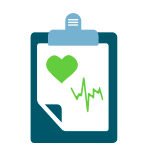
There are many reasons why a drug may no longer be available or never was approved by the FDA and made commercially available for patients in the United States. These include:
• Safety issues
• No significant clinical benefit found
• A high cost to bring the drug to market
Ultimately the decision to take unapproved medicines should be made in close consultation with your physician, and it is important to remember that there is always a chance that it may not work or it may have serious side effects.
Informed Consent
Before participating in an expanded access program, individuals (or their guardians) will need to review and agree to certain terms outlined in an informed consent document. This document will be provided by the physician or drug company and will detail the specific information about the program and the associated risks of taking the unapproved medicine. The document must be signed by the participant or their legal guardian before gaining access to the medicine.
To learn more about informed consent, please see the National Human Genome Research Institute’s “Elements of Informed Consent” (http://www.genome.gov/27526659). It further explains the elements of this required process.
SECTION 3: WHAT ARE THE COSTS? 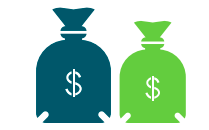
Generally, medicines that are provided in the United States through an expanded access pathway (single patient or groups of patients) are given free of charge by the drug company. However, a drug company has the option to recover the direct costs of manufacturing the drug and shipping it to the hospital or doctor’s office by charging a fee to cover these costs. Generally, this cost is covered by the patient or, on rare occasion, a third party insurance company although it is important to note that most insurance providers will not cover these investigational or non-U.S. approved medicines.
In the event that a patient wants to obtain the medicine by a personal importation pathway, the drug source outside the United States will likely quote a selling price to the healthcare practitioner or patient. Patients normally pay for the drug, but they have the option to ask their insurance providers for financial assistance as well. There are some examples of where a U.S. insurance company has agreed to cover the cost of the drug, but it is not common.
SECTION 4: POTENTIAL EMOTIONAL IMPACT 
“Emotionally, it was tough for us,” says Sarah Knight, the parent of a child with a mitochondrial disease. “Your doctor will tell you all about this promising treatment option and you feel like you are on cloud nine, but then they tell you about the process to obtain that wonderful drug and you are quickly knocked back down, realizing there will be forms, tests, more forms, meetings with doctors, possible trips to other hospitals, and all of that before you ever know if your child will get the drug.”
Try to understand that pursuing unapproved medicines will take time and consider how this might affect your family. The process of obtaining unapproved medicines may change the quality of life for your loved ones, but there are some other important things you should consider:
• Am I willing to sacrifice the necessary time it will take to acquire this medicine? And am I aware that this is quality time that could have been spent with my loved one?
• Will the rest of my family withstand the time out of work and/or loss of attention while this process occurs?
• Am I willing to accept that once I acquire the drug, my loved one’s symptoms may have progressed? • Am I willing to accept that taking this medicine might actually make my loved one worse (not better)?
SECTION 5: GETTING STARTED 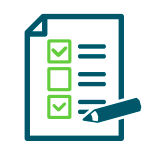
If you are thinking about exploring access to a treatment prior to its approval or to a drug that is not available in the United States, you should first contact your physician to discuss. If your physician believes that an unapproved medicine could potentially be of benefit to you, ask your doctor whether he/she is comfortable with contacting the drug company or wholesaler on your behalf.
This is just the first step your physician must take to obtain unapproved medicines for individual patients. For additional information on the steps physicians should take, direct them to the FDA’s Physician Request site: (http:// www.fda.gov/Drugs/DevelopmentApprovalProcess/HowDrugsareDevelopedandApproved/ ).
Keep in mind that the FDA has the right to reject these requests for access to investigational drugs. Further, the pharmaceutical or biotechnology company that has developed the drug may not be willing or able to offer it. Companies are not required by law to provide this type of access nor are they required to manufacture drugs for these purposes; it is solely at their discretion. There are many reasons why drug companies may refuse compassionate use requests, including:
• Lack of Efficacy: There may be little to no evidence that the drug will be effective for the specific illness
• Safety Issues: The drug may have toxicity problems or cause serious side effects which aren’t in the public domain
• Production Capacity: Drugs can be expensive and complex to manufacture. Further, the raw materials may be in short supply and therefore, the feasibility to manufacture drugs in sufficient quantities to support an access program or to manufacture at all. Lastly, the main priority for the drug supply is often to support the clinical trial, and therefore, no drug supply may be available for patients outside of the trial.
“It is important to understand that the company must be willing and agreeable to compassionate use,” says Pat Furlong, president and founder of Parent Project Muscular Dystrophy. “Some companies take the position that compassionate use is too much to risk because if a serious adverse event occurs, it could be included on the label. Other companies (especially start up or small biotechs) may not have manufacturing ability beyond the clinical trial drug supply and still others do not have enough money to cover costs related to supporting the patients in an EAP.”
A misconception among many is that a patient’s use of a drug in development outside of a clinical trial could produce data that could jeopardize a company’s chances of getting approval for that drug. Frank Burroughs, founder of Abigail Alliance for Better Access to Developmental Drugs, identifies this as an unfounded fear that has never been an issue at the FDA.
“For some time, the patient advocacy group Abigail Alliance for Better Access to Developmental Drugs, which with some success, has worked to dispel a myth in the pharmaceutical industry that data outside of a clinical trial could keep a drug from being approved by the FDA,” says Frank Burroughs, founder of Abigail Alliance. “The FDA has repeatedly said that there has never been a drug that was doing well in a clinical trials that failed to get approved because of data outside of the clinical trials.”
When the amount of drug available is in short supply, some drug companies may establish a random selection program by which eligible patients are chosen randomly to receive drugs in order to provide for a fair and equitable approach. Other companies may review these access requests on a case-by-case basis to determine eligibility.
Other Ways to Learn More
In addition to talking to your doctor, learn more about expanded access programs through Clinicaltrials.gov (http://www.clinicaltrials. gov). It lists all of the clinical trials and current U.S. Expanded Access /Compassionate Use Programs.
Other resources to learn more about your expanded access options are patient advocacy groups. They often provide valuable information through their patient forums and discussion boards. “It is all about who you know, sometimes, and I think getting access to trial drugs and off label drugs, etc. could only be helped by reaching out to as many patient advocacy groups as possible and learn from each other,” says parent, Sarah Knight.
If you are interested in finding and joining a patient advocacy organization, the NCATS Office of Rare Diseases Research has compiled a list of advocacy organizations that support rare diseases (http://rarediseases.info.nih.gov/ files/Patient_Support_Groups_ORDR%20List. pdf).
Resource guide
Educating Physicians about Expanded Access:
Physician Reference: A Guide to Navigating Expanded Access (http://www.idispharma.com/sites/default/files/uploads/Idis_Talk%20to%20your%20doc%20 FS_022912.pdf): This document provides a brief overview of how medicines not yet approved by the FDA can be obtained and used by patients. It can be printed and brought to physicians to encourage their support with the process.
FDA’s Physician Request Site (http://www.fda.gov/Drugs/DevelopmentApprovalProcess/HowDrugsareDevelopedandApproved/ApprovalApplications/InvestigationalNewDrugINDApplication/ ucm107434.htm): This informational site lays out all of the steps physicians must follow to obtain unapproved medicines for their individual patients.
Learning More about Expanded Access:
FDA Office of Health and Constituent Affairs (http://www.fda.gov/AboutFDA/CentersOffices/ OC/OfficeofExternalAffairs/ucm343095.htm?source=govdelivery): If you have questions or would like more information on expanded access programs, this office of the FDA should be able to help.
FDA’s Patient Network (http://www.patientnetwork.fda.gov/find-other-treatment-options/expanded-access-0): Through FDA’s Patient Network, you can learn more about FDA and how it works, where you can provide input in decisions about new or current medical products, and talk with FDA experts about issues and concerns. It also provides additional information on expanded access.
Locating Patient Advocacy Organizations:
The NCATS Office of Rare Diseases Research (http://rarediseases.info.nih.gov/files/Patient_ Support_Groups_ORDR%20List.pdf): This link goes directly to a list of advocacy organizations which support the rare disease community. If your loved one has just been diagnosed with a rare, life-limiting disease, connecting with others through a support group or advocacy organization can be immeasurably helpful.
Obtaining Access to Unapproved Medicines:
Abigail Alliance for Better Access to Development Drugs (http://www.abigail-alliance.org/): This patient advocacy organization strives to have promising investigational lifesaving drugs approved much earlier and faster for patients with cancer and other serious life-threatening illnesses. The Alliance is also promoting creative ways of increasing expanded access and compassionate use programs.
Clinicaltrials.gov (http://www.clinicaltrials.gov): This website provides a listing of all clinical trials and current U.S. Expanded Access /Compassionate Use Programs. You can search Expanded Access Programs specifically by typing “EAP” in the search box. There is also a drop down menu to search for Expanded Access Programs.
Idis Limited (http://www.idispharma.com/who-we-help/patients, http://www.idispharma.com/ who-we-help/advocacy-groups): Idis works closely with drug companies and patient communities to support access for patients in need. Its website has links to support both patients and patient advocacy groups as they explore their options to access medicines.
NORD’s Expanded Access/Random Selection Programs (https://www.rarediseases.org/industry/patient-programs): NORD works closely with pharmaceutical and biotechnology companies to provide patients with information about clinical trials and also administers computerized random selection programs when a limited amount of investigation drug is available.
Understanding Informed Consent
National Human Genome Research Institute’s “Elements of Informed Consent Breakdown” (http://www.genome.gov/27526659): This breakdown provides comprehensive information on informed consent.
Let others benefit from your knowledge by sharing your tips and tricks! If you would like to contribute your experience or have a comment/suggestion, please enter it online at http://globalgenes.org/toolkits.

Stay Connected
Sign up for updates straight to your inbox.
